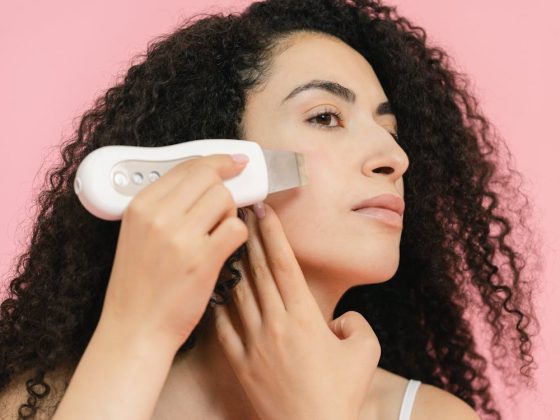Dealing with melasma, a common pigmentation issue that leaves brown or grayish-brown patches on the skin, often requires a dedicated skincare regimen. This condition is primarily influenced by sun exposure, hormonal shifts (like those during pregnancy or from birth control), and genetics. Understanding melasma and its triggers is essential for effective management and achieving a more even complexion. This ultimate guide to melasma care will provide you with the knowledge and tools needed to navigate this condition confidently.
Understanding Melasma
Melasma is a widespread skin condition characterized by brown to gray-brown patches, especially on the face. You’ll commonly find it on the cheeks, forehead, nose, chin, and upper lip, though it can also appear on other sun-exposed areas like the forearms and neck. While melasma can affect both men and women, it’s particularly prevalent among women, especially those with darker skin tones.
What Triggers Melasma?
The exact cause of melasma is still unclear, but it’s believed to stem from the overproduction of skin pigment, likely due to increased estrogen levels. Here are some factors that can heighten the risk of developing melasma:
- Hormonal Changes: Fluctuations in hormones, especially during pregnancy, while on birth control, or during hormone replacement therapy, are major triggers. This is why it’s often referred to as the “mask of pregnancy.”
- Sun Exposure: UV rays from the sun can ramp up melanin production, leading to the dark patches characteristic of melasma. This is why melasma can worsen in summer and improve during winter.
- Genetics: If you have a family history of melasma, you may be more likely to experience it yourself.
- Skin Type: People with darker skin types, which have more active melanocytes (the cells that produce melanin), tend to be more susceptible to melasma than those with lighter skin.
- Cosmetic Products: Some skincare and makeup products can irritate the skin, making melasma worse for predisposed people. It’s best to choose hypoallergenic or non-comedogenic products to reduce risk.
- Other Factors: While the connection isn’t as clear-cut, stress and thyroid disease have also been suggested as potential triggers.
Finding the right skincare routine to manage melasma involves understanding the condition, knowing your skin type, and considering environmental and genetic factors contributing to its development. Here are some tips to help you determine the best skincare routine for melasma:
- Start with a Gentle Cleanser: Avoid harsh cleansers that can strip your skin of natural oils, leading to irritation and potentially worsening pigmentation. Opt for sulfate-free, hydrating cleansers. If you wear makeup, consider double cleansing with a gentle oil-based cleanser to remove all makeup thoroughly.
- Add a Vitamin C Serum: Vitamin C is a powerful antioxidant that fights free radical damage, reduces melanin production, and brightens your complexion. Look for serums containing L-ascorbic acid in concentrations between 10-20%. Ensure it comes in opaque or tinted bottles to protect it from light exposure.
- Make Sun Protection a Priority: Since UV exposure is a common trigger for melasma, protecting your skin from the sun is essential to avoid further darkening. Always apply a broad-spectrum sunscreen that has at least SPF 30 for the best protection. Mineral sunscreens containing zinc oxide or titanium dioxide provide effective physical protection from harmful rays.
- Incorporate Skin Lightening Agents: To help lighten melasma patches, look for products with ingredients that inhibit melanin production, such as hydroquinone (2% or higher) and azelaic acid. For natural alternatives, seek skincare products with kojic acid, licorice root, or niacinamide.
- Stay Hydrated: Keeping your skin moisturized can help prevent irritation from other products in your routine. A lightweight, non-comedogenic moisturizer is suitable for most skin types. If you have drier skin, choose ceramides or hyaluronic acid for extra hydration.
- Avoid Known Triggers: If certain products or ingredients tend to irritate your skin or worsen melasma, it’s best to steer clear of them. This might include specific makeup brands, skin treatments, or medications.
- Seek Professional Treatments: For those dealing with melasma, the severity of the condition will guide the treatment options recommended by your dermatologist. At Vibrant Dermatology, we specialize in melasma care and offer a variety of treatments to improve your skin’s appearance. Our advanced laser therapies, like the Aerolase laser, can significantly enhance melasma. We also provide personalized chemical peels and other skincare solutions to help you manage your condition effectively.
Best At-Home Products for Treating Melasma
Brightening Serums and Creams for Melasma
When tackling melasma, brightening serums and creams are your best friends. Choose a melasma serum or cream that suits your texture preference—a lightweight serum or a creamy formula. Look for products containing vitamin C (aim for a concentration between 10% and 20%), tranexamic acid, azelaic acid, arbutin, kojic acid, and niacinamide. These powerful ingredients work to reduce excess pigment production, lighten melasma patches, and create a more even skin tone. The best part? Unlike other brightening agents like hydroquinone, they’re generally gentle and safe for all skin types.
-
Topicals Faded Serum for Dark Spots & Discoloration
This serum, designed to be safe for hyperpigmentation, effectively addresses persistent discoloration, post-blemish marks, scars, and dark spots on all skin types and ethnicities. Formulated by dermatologists, this serum visibly reduces persistent marks and evens skin tone from breakouts and sun damage. Gentle enough for daily use, it delivers noticeable results in as little as two weeks, making it an excellent choice for those seeking a brighter, more even complexion.
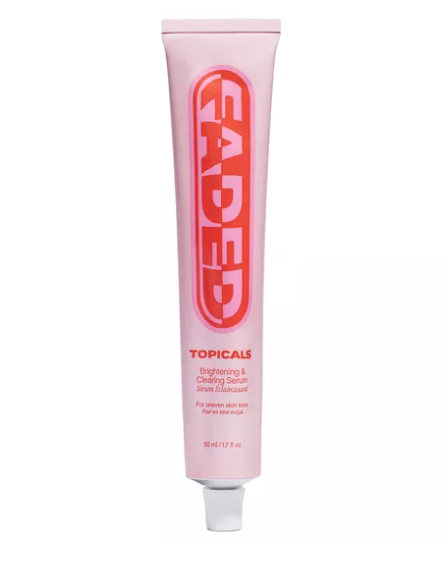
-
Urban Skin Rx HyperCorrect Intense Fading Cream
Target hyperpigmentation right from the start with Step 0: HyperCorrect™ Intense Fading Cream. This award-winning pre-cleanse treatment harnesses the power of 5% Cysteamine to effectively reduce the appearance of stubborn hyperpigmentation, including discoloration from melasma. It diminishes dark spots, acne scars, age spots, and sun damage while smoothing rough texture for a softer skin feel. Additionally, this cream provides antioxidant protection against environmental stressors, helping brighten skin tone for a more radiant complexion.
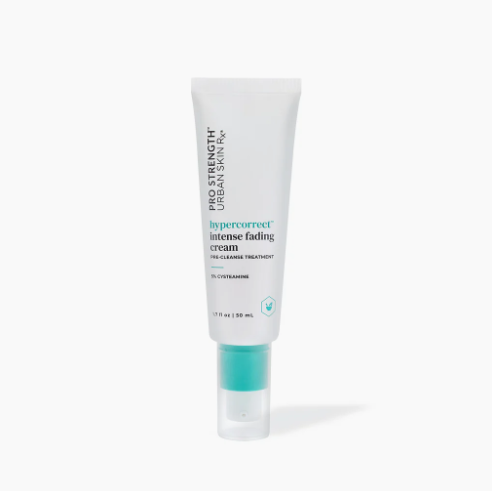
Sunscreens for Melasma
Using brightening products is excellent, but without SPF, you’re missing a crucial step in your melasma-fighting routine. UV exposure significantly contributes to melasma, so protecting your skin is essential. Opt for a sunscreen with at least SPF 30, ideally one that uses mineral or physical blockers like zinc oxide or titanium dioxide.
Dermatologist Dr. Saya Obayan says, “Chemical sunscreens only block UV light, while zinc-based sunscreens block all types of light, making them more effective at preventing melasma.” To amp up your protection, consider sunscreen with iron oxides. “They help shield against blue light from your devices and provide additional UVA protection,” she explains.
As a general rule, apply a nickel-sized amount of sunscreen to your face each morning before heading out, and remember to reapply every two hours. For on-the-go touch-ups, having a powder sunscreen in your bag is a great, mess-free option.
-
Alastin HydraTint Pro Mineral Broad Spectrum Sunscreen SPF36
HydraTint is a lightweight, all-mineral-tinted sunscreen that hydrates and protects the skin while delivering broad-spectrum SPF 36 protection against harmful UVA and UVB rays. This eco-friendly formula evens and brightens the complexion with a luminous finish suitable for most skin tones, and it’s packed with powerful antioxidants to shield against pollution, infrared rays, and blue light. Providing long-lasting hydration without leaving any white residue, HydraTint is also water-resistant for up to 40 minutes and fragrance-free. Recognized as the SHAPE “Best Tinted Moisturizer 2021” Beauty Award winner, this sunscreen is perfect for all skin types looking for hydration and sun protection.
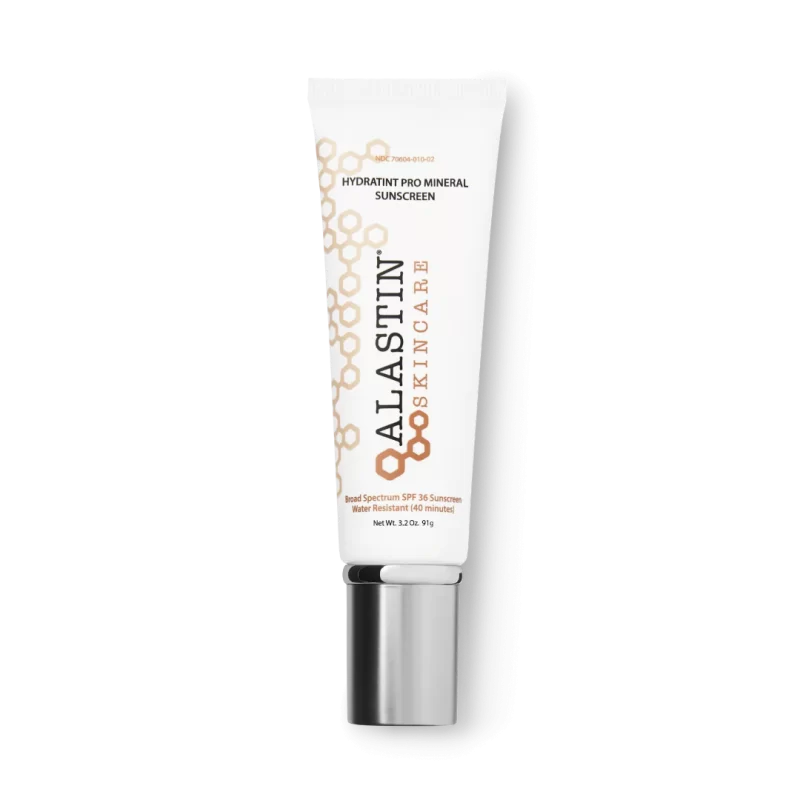
Retinols for Melasma
Many people wonder if retinol can help with melasma, and the answer is a resounding yes—especially when combined with other brightening products. Retinol boosts your skin’s cell turnover rate, helping to push damaged, pigmented cells to the surface so they can slough off, making way for fresh, new skin cells, according to Dr. Westbay. The result is a more even-toned complexion with less blotchiness. Recent studies suggest that retinol can reduce the skin’s ability to produce pigment, further aiding in melasma treatment.
However, there’s a caveat: Retinol can be irritating, which may exacerbate melasma if not used carefully. Start with a gentle retinol formula and ease into it: apply it once a week for the first week, then twice a week for two weeks, and three nights a week for three weeks. After that, you can use it every other night indefinitely. If you notice redness or flakiness, dial back your usage until your skin adjusts.
-
La Roche-Posay Effaclar Adapalene Gel 0.1% Acne Treatment
La Roche-Posay Effaclar Adapalene Gel 0.1% is an over-the-counter acne treatment featuring prescription-strength retinoid adapalene. Developed and tested by dermatologists, this non-comedogenic gel suits both teen and adult acne. This 45g topical treatment is designed for once-daily application, helping to clear and prevent blackheads, whiteheads, clogged pores, and acne blemishes. For optimal results, apply it all over the face in the evening, followed by a moisturizer, and remember to use SPF daily, as retinoids can increase sun sensitivity.
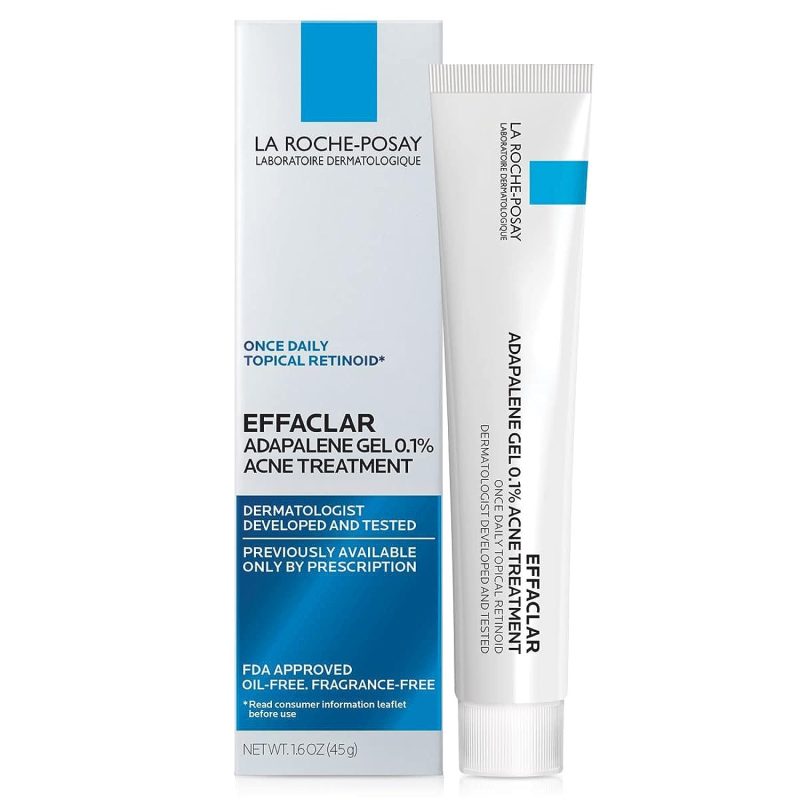
Chemical Exfoliants for Melasma
Chemical exfoliants can effectively manage melasma, including AHAs, BHAs, and PHAs. According to plastic surgeon Dr. Melissa Doft, these exfoliating acids work by dissolving the bonds, or “glue,” that hold dead skin cells together on the surface, essential for achieving brighter skin and reducing the appearance of melasma. Plus, these acids offer significant skin-smoothing benefits.
When adding chemical exfoliants to your skincare routine, it’s crucial not to overdo it. Dr. Doft emphasizes that excessive use can weaken your skin’s protective barrier, potentially leading to inflammation—a known trigger for melasma. Stick to one exfoliating product at a time and follow the instructions closely. If you also use other potent actives like retinoids or vitamin C, consider using your chemical exfoliant on alternate days or nights to minimize irritation.
-
Sofie Pavitt Face Mandelic Clearing Serum
The Mandelic Clearing Serum is a 3-in-1 exfoliating active serum designed to smooth, hydrate, and protect the skin. This gentle yet effective formula features 8% Mandelic Acid, Hyaluronic Acid, and Panthenol, making it ideal for those with acne-prone, dull, or uneven skin. Mandelic Acid works to gently exfoliate dead skin cells without irritating them, while Hyaluronic Acid provides essential hydration, and Panthenol offers protective benefits, leaving the skin looking refreshed and revitalized.
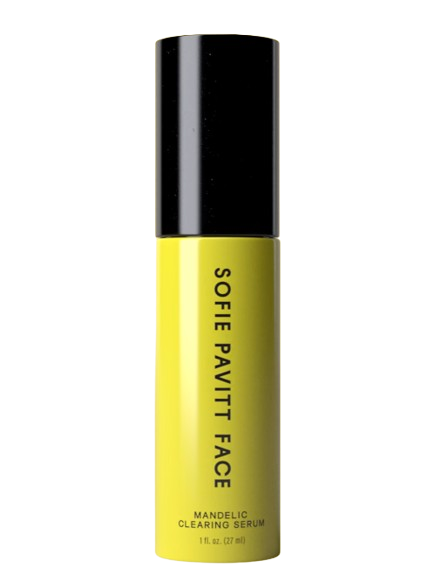
Embrace Your Journey to Clearer Skin
Effectively managing melasma requires a thoughtful skincare routine tailored to individual needs and triggers. By incorporating gentle cleansers, brightening agents, and robust sun protection, individuals can combat the appearance of melasma while promoting a healthier, more even complexion. Professional treatments and at-home products also play a crucial role in enhancing results and supporting skin health. With a consistent approach and awareness of factors like hormonal changes and sun exposure, achieving clearer, brighter skin is within reach. Embracing these strategies can empower individuals to take control of their skin journey and confidently embrace their natural beauty.




